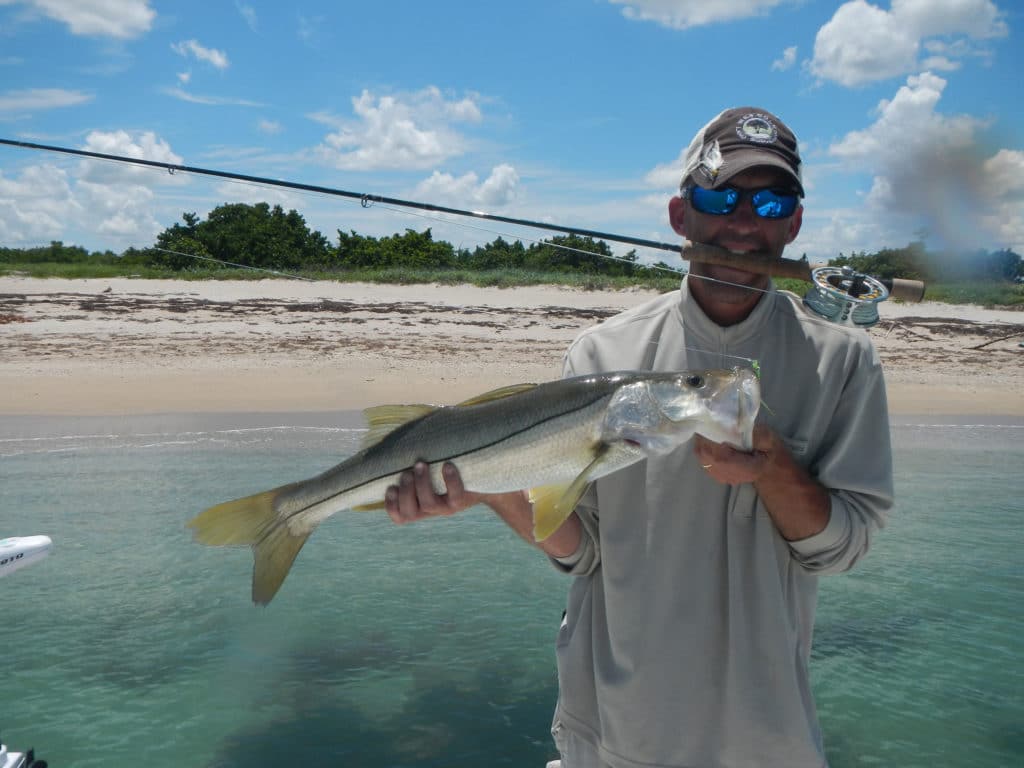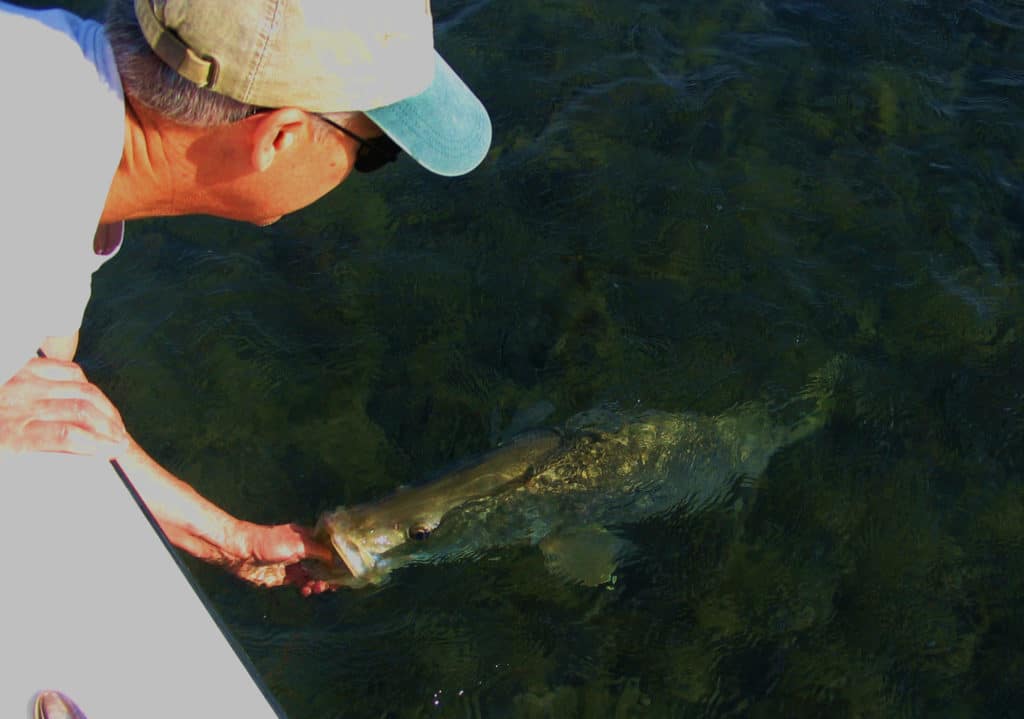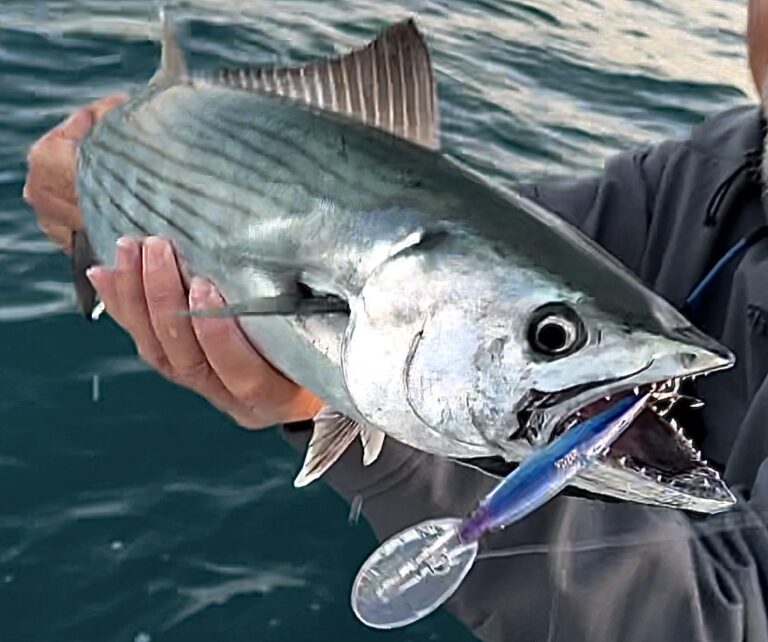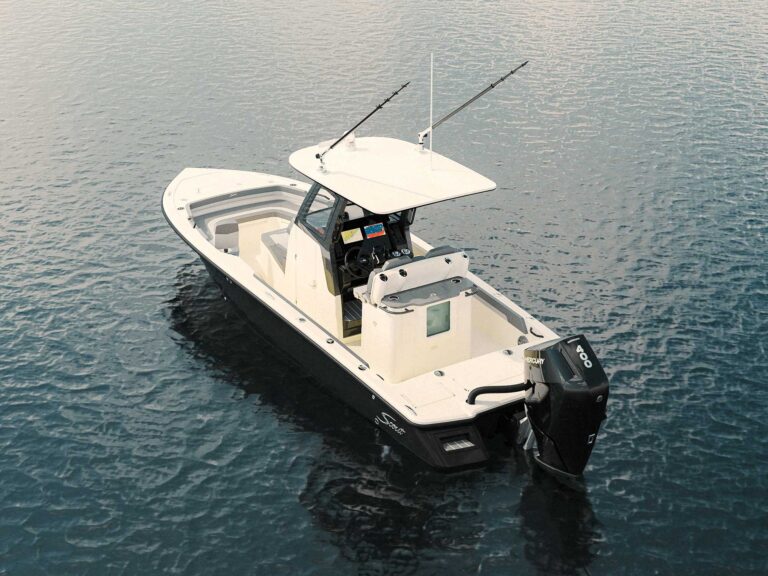
It’s not the loud “coosh” of a feeding tarpon or the “pfft” of a sipping trout, but the second you hear the distinct “pop” of a feeding snook, you’re the one that’s hooked. It doesn’t hurt that the second you come tight, the fish is going to make a blistering run or clear the water shaking its head.
There’s a reason snook anglers are fanatical about the species—these fish are super aggressive and tolerate a wide range of salinities, and when harvested in the slot range, they eat well. But for all their game qualities, it’s the strike that anglers remember most.
Florida’s inlets and passes can hold dense schools of snook, particularly during the fall mullet run and summer spawn. Heavy currents and rough sea conditions can make it tough to fish these areas by boat, but from shore you can pitch a lure or live bait into the tide and let the current do all the work.
Snook are structure-oriented, so bridges hold a lot of fish, and when you work a lure or fly down the shadow line, it’s going to be met with a discernable “pop” if it’s on the surface, or a “thump” if it’s submerged.
The same goes for fishing lighted docks at night. Under the lights, the fish gather on the surface picking off any shrimp, crabs or baitfish carried by the current, and on the good nights, there’s more popping than movie night at Orville Redenbacher’s. Fire a small fly, lure or bait ahead of the light, wait for the pop, and then fight your way over the 4 or 5 feet the fish need to reach the pilings.

These fish tend to hunt the shorelines, and one of the most popular techniques for taking snook is to walk the beaches with a spinning or fly rod and blind-cast the shoreline until the sun gets high enough that you can see into the water and sight-fish your targets. Often the early start is more productive, when the fish can’t see your lure well, which brings out an aggressive reaction strike.
Along the shorelines of the estuaries, fish snook with topwater plugs, soft-plastics and live bait, and you’ll find consistent action around the potholes in the grass. Snook are a schooling fish, so where you hook one, others are likely to be around.
At the Florida Fish and Wildlife Conservation Commission this past June, FWC scientists noted the snook spawning biomass was strong on both coasts. But the most interesting news was that global warming was expanding their range, and fish are being caught as far north as Daytona Beach on the east coast and Cedar Key on the west coast of Florida.
That bodes well for anglers who chase their snook day and night, always looking for the next “pop.” But it’s the snook that will get your attention whether you hear the strike or not.
To book your next fishing trip please visit BaitYourHook.com.





